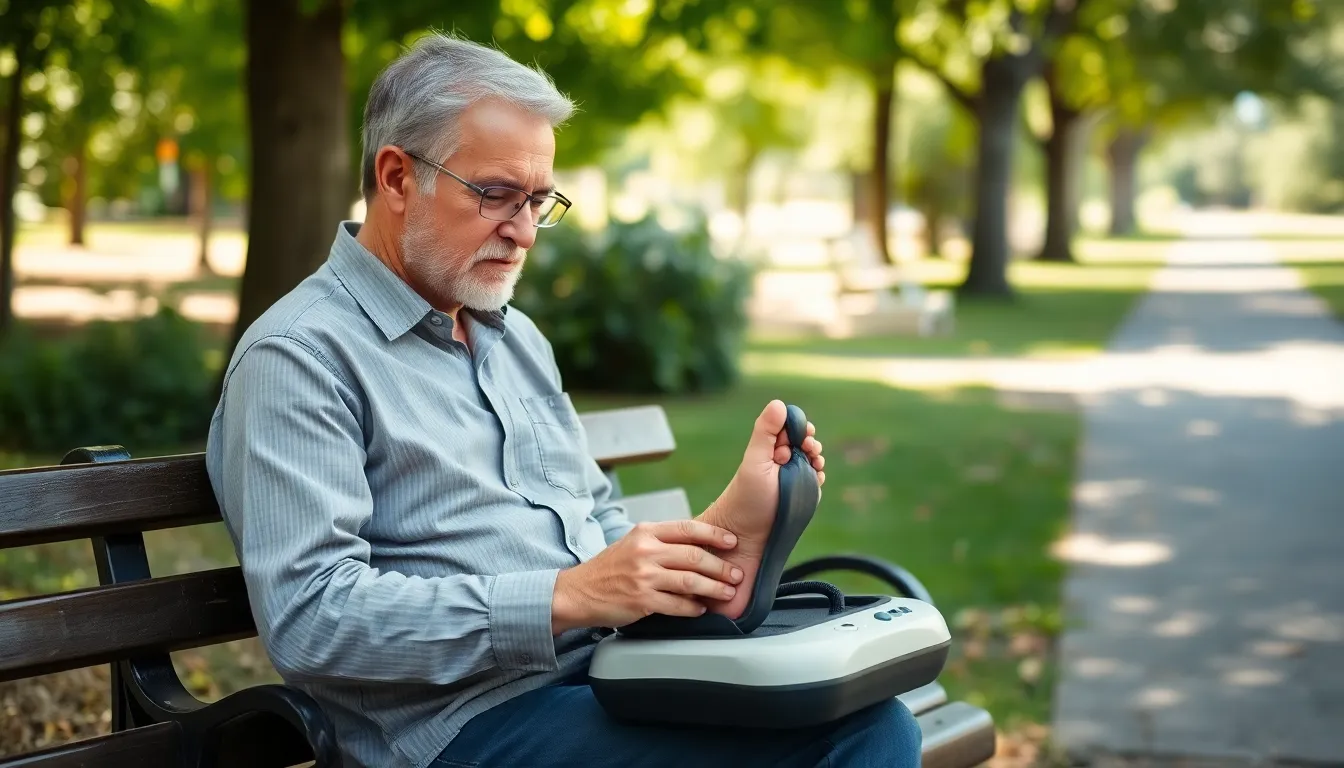
Living with pavatalgia can feel like trying to dance with two left feet—awkward and a bit painful. It’s that nagging discomfort that makes you question your life choices, especially when it comes to your favorite activities. But how long can someone cope with this pesky condition?
How Long Can I Live With Pavatalgia
Pavatalgia entails a specific discomfort that can significantly impact daily life. This condition revolves around pain that often arises from various underlying factors.
Definition and Causes
Pavatalgia refers to pain in the foot that may occur due to several reasons. Injury to the foot often leads to this condition, resulting in inflammation and discomfort. Other causes include overuse, which can strain muscles and tendons, as well as underlying medical conditions. Conditions like arthritis or neuropathy can also contribute to the onset of pavatalgia. Understanding these causes helps in managing and preventing this painful experience effectively.
Symptoms to Watch For
Symptoms associated with pavatalgia include localized pain in the foot and tenderness in the affected area. Swelling may also occur, making footwear uncomfortable. Patients often report difficulty walking or standing for extended periods. Stiffness can accompany the pain, especially in the morning or after resting. It’s crucial to pay attention to these symptoms, as they can signal the need for medical evaluation or intervention.
Life Expectancy and Pavatalgia

Pavatalgia’s impact on life expectancy varies based on individual circumstances. Understanding the factors that influence how long someone lives with this condition is important for comprehensive management.
Factors Affecting Life Expectancy
Underlying health conditions significantly influence life expectancy for those with pavatalgia. Age and overall physical health play vital roles in managing symptoms effectively. Individuals with chronic conditions, such as diabetes or cardiovascular disease, may experience a shorter life expectancy due to complications. Lifestyle habits, including diet and exercise, also contribute. A healthy weight positively affects overall well-being and may alleviate some foot pain. Access to healthcare resources ensures timely medical intervention, which can improve outcomes.
Statistical Insights
Statistics reveal important information about life expectancy in individuals with pavatalgia. Studies indicate that around 10% to 30% of patients experience chronic pain affecting their daily lives significantly. According to the American Podiatric Medical Association, approximately 80% of adults experience foot problems at some point. Those with persistent pain may face an increased risk of depression and anxiety, impacting overall health. Engaging in physical therapy and preventive measures improves quality of life. Understanding these statistics aids in making informed decisions regarding treatment options.
Managing Pavatalgia
Managing pavatalgia effectively involves exploring various treatment options and implementing lifestyle modifications. Understanding these aspects can greatly enhance quality of life.
Treatment Options
Consulting a healthcare professional often leads to personalized treatment choices. Various options exist, like physical therapy and prescription pain medications. Nonsteroidal anti-inflammatory drugs (NSAIDs) play a vital role in reducing inflammation and alleviating pain. In some cases, corticosteroid injections provide relief when other treatments prove ineffective. Utilizing supportive footwear can also minimize discomfort during daily activities. Surgery might be a consideration for severe instances, especially when structural issues are involved.
Lifestyle Modifications
Incorporating lifestyle modifications can significantly influence overall well-being. Regular exercise strengthens muscles and promotes flexibility, directly impacting foot health. Additionally, maintaining a healthy weight reduces strain on the feet, easing discomfort. Adopting a balanced diet rich in anti-inflammatory foods supports recovery and alleviates symptoms. Engaging in mindfulness practices, like yoga or meditation, helps manage stress, which can exacerbate pain. Lastly, prioritizing rest and elevating the feet during downtime contributes to long-term comfort.
Seeking Professional Help
Receiving appropriate medical attention is vital for managing pavatalgia effectively. Symptoms can significantly impair daily activities, warranting professional guidance.
When to Consult a Doctor
Consult a doctor if experiencing persistent foot pain that doesn’t improve with home remedies. Observing swelling, redness, or warmth around the affected area also indicates the need for medical evaluation. Difficulty walking or standing signifies potential complications that could worsen over time. In addition, sudden changes in foot function or increased discomfort necessitate immediate attention. Seeking specialist advice can lead to a tailored treatment approach, targeting underlying conditions contributing to the pain.
Importance of Early Detection
Early detection of pavatalgia enhances the likelihood of effective management. Identifying the condition promptly allows for timely interventions that can mitigate long-term complications. Chronic pain often results in decreased mobility and increased anxiety, contributing to a reduced quality of life. Recognizing symptoms early can facilitate appropriate lifestyle changes or treatments, curbing the progression of the condition. Engaging with healthcare professionals when symptoms arise empowers individuals to take charge of their health and maintain an active lifestyle.
Manage Pain Effectively
Living with pavatalgia presents unique challenges that can affect daily life and overall well-being. While the duration of discomfort varies greatly among individuals, proactive management strategies play a vital role in enhancing quality of life. By addressing underlying health conditions and adopting healthy lifestyle habits, individuals can significantly mitigate symptoms.
Engaging with healthcare professionals ensures tailored treatment options that can help manage pain effectively. Prioritizing self-care and making informed choices empowers individuals to navigate their experience with pavatalgia. While the journey may be difficult, support and appropriate interventions can lead to a more comfortable and fulfilling life.
